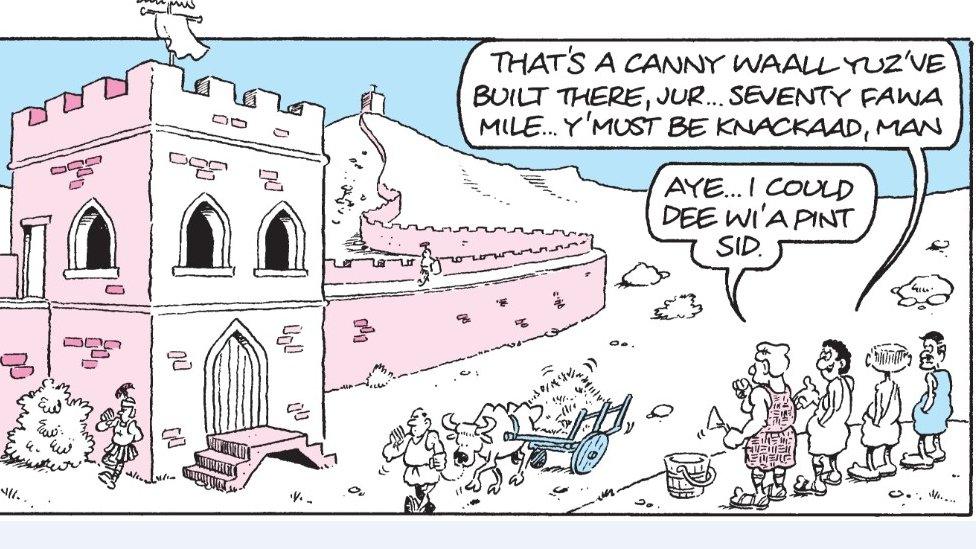Segedunum exhibition explores Hadrian's Wall construction
- Published

The defensive structure runs from the Solway Firth to Tyneside
An exhibition aims to "shine a light" on the construction of Hadrian's Wall on its 1,900th anniversary.
Held at Segedunum Roman Fort and Museum, in Wallsend, it explores the substantial practical and logistical challenges those building it faced.
These include where the stone was from and how it was transported, and how the chain of command was carried out.
Running until 1 October, it is one of a number of anniversary events being held along the 73-mile (118km) structure.
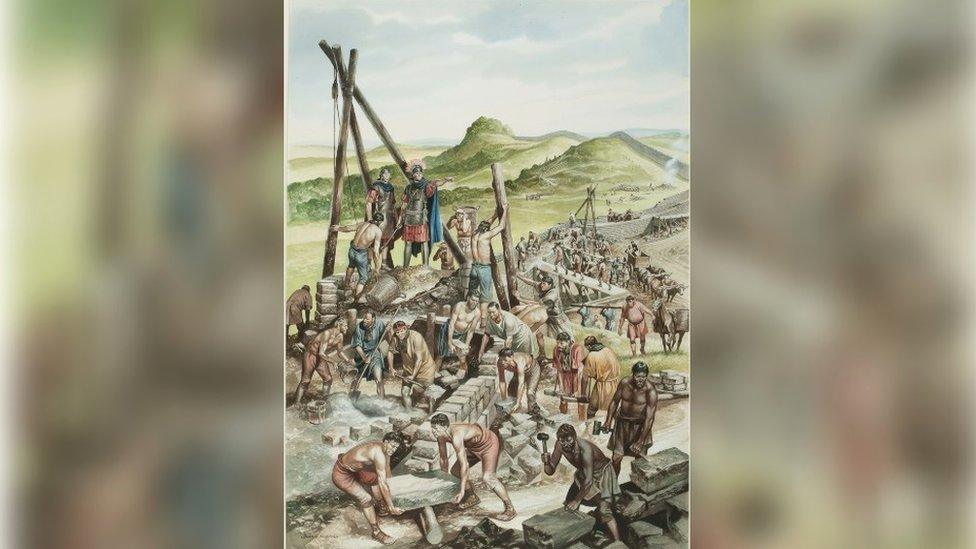
A watercolour by Ronald Embleton depicting the building of the wall will be on show
In AD122, Emperor Hadrian visited Britain and ordered the construction of the wall, which took about 15,000 men six years.
Some of the tools used, such a "spade shoe" - the iron edging of the wooden spade - and turf cutters, will be on show.
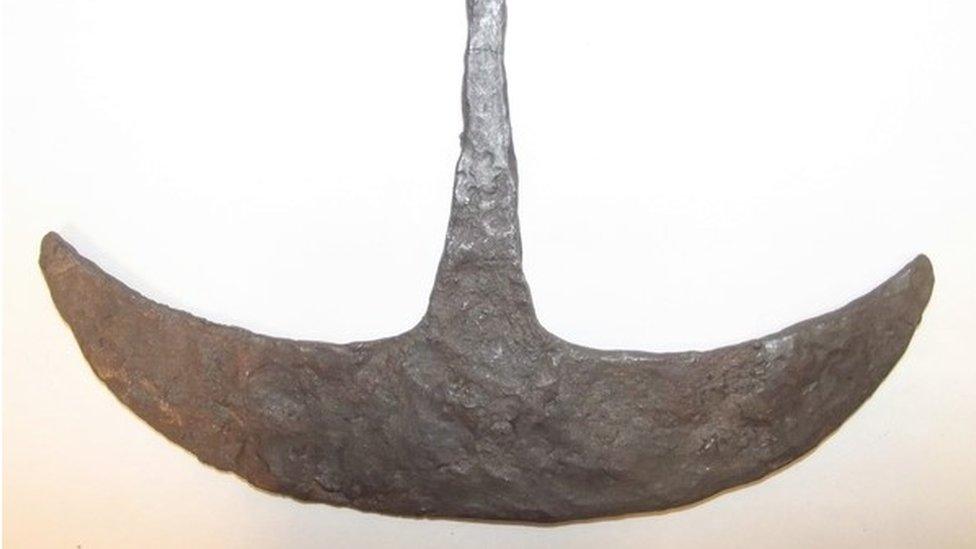
Special cutters were used to chop the turf into blocks before digging down
The exhibition also reveals evidence from an 80m (262ft) stretch of wall's remain which had collapsed and was patched up with stones taken from one of the gateways of the fort at Segedunum.
This shows what the original would have looked like at the time of Hadrian, and an image of that has gone on display.
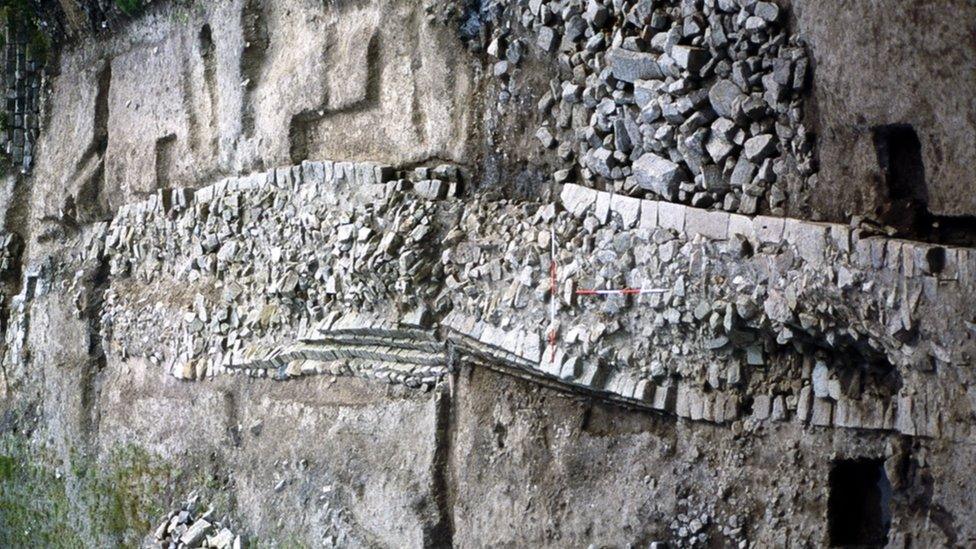
Excavated section of the wall at Segedunum
Steve Bishop, head of cultural development at North Tyneside Council, said: "This will be a fascinating exhibition that shines a light on the origins of the Wall, and explores the reasons why the wall was deemed necessary by the Romans and how they constructed it."
Geoff Woodward, from Tyne & Wear Archives Museum, said: "Segedunum has arguably the most interesting and revealing stretch of Wall remains from anywhere along its length.
"In the monument's 1,900th year it really is a great place to explore and understand this amazing survivor from ancient history."
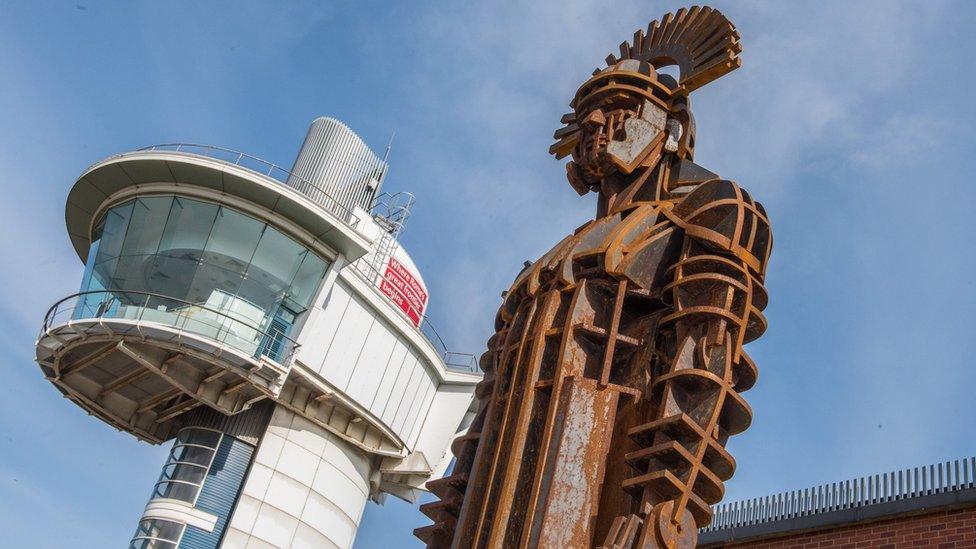
Segedunum, which means "strong fort" was built to guard the eastern end of the Wall

Follow BBC North East & Cumbria on Twitter, external, Facebook, external and Instagram, external. Send your story ideas to northeastandcumbria@bbc.co.uk, external.
Related topics
- Published7 November 2021

- Published27 May 2019
